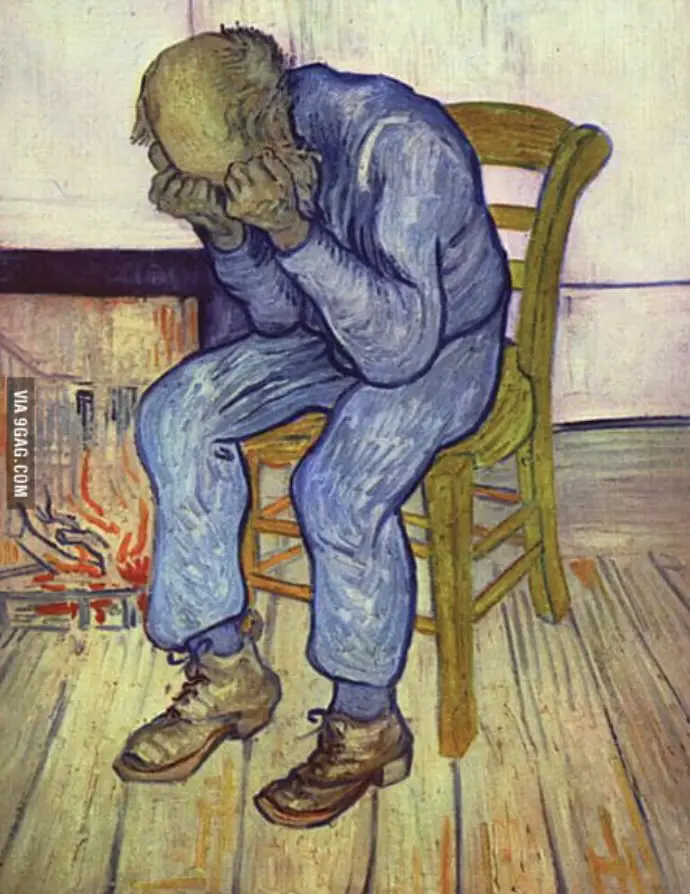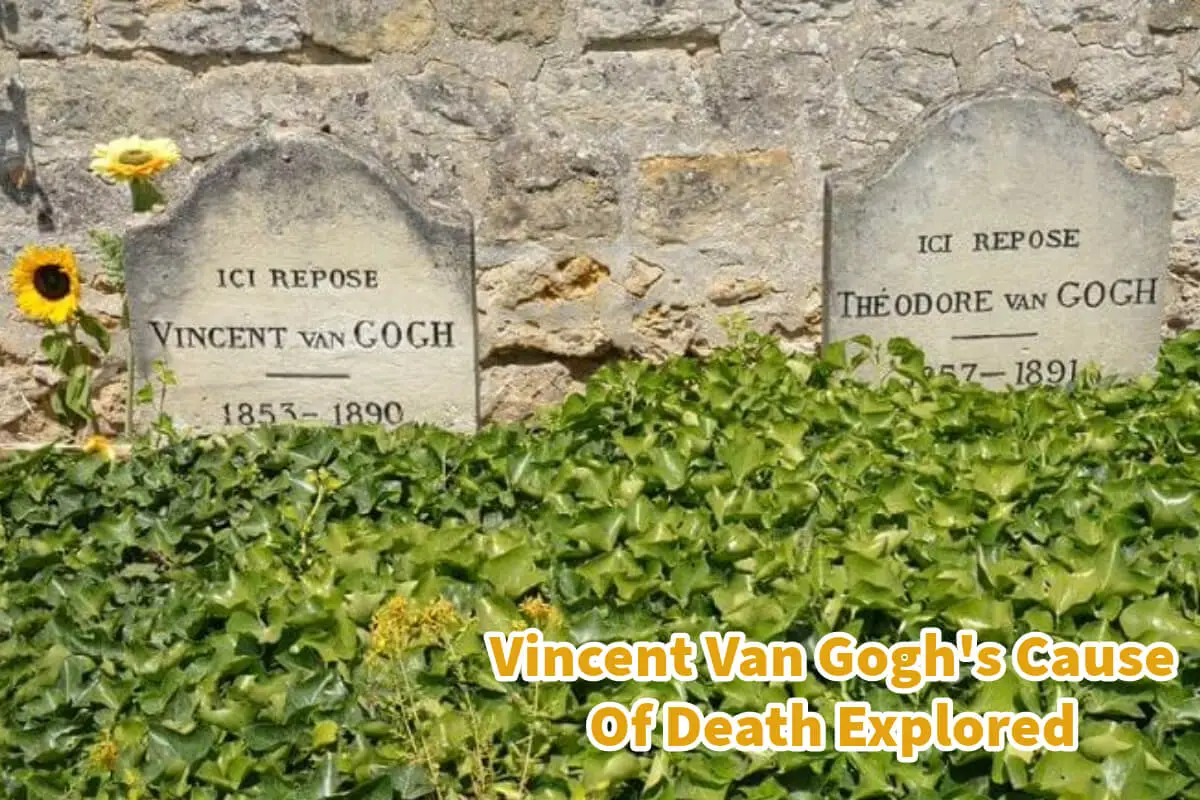Vincent van Gogh, undeniably one of the greatest artists of all time, has left an indelible mark on the world with his extraordinary artwork.
While Vincent Van Gogh is celebrated for his artistic genius, there remains a lingering curiosity surrounding the circumstances of his tragic death. Officially labeled as self-inflicted or a suicide, why he chose to end his life is far from simple. We will delve into the complex factors that may have contributed to this fateful decision and examine the enduring legacy he left behind.
Table of Contents
Vincent Van Gogh’s Cause Of Death: A Closer Look At His Tragic End
The name Vincent van Gogh conjures images of vibrant sunflowers, swirling starry nights, and dramatic, emotion-laden brushstrokes. He is celebrated as one of the greatest artists in history, yet his life was marked by immense suffering, and his untimely death remains a poignant and tragic chapter in the annals of art history.
On July 27, 1890, in a quiet field near Auvers-sur-Oise, a picturesque village near Paris, Vincent van Gogh shot himself in the chest with a revolver. Two days later, he succumbed to his wounds with his beloved brother Theo van Gogh at his bedside.
Vincent’s cause of death was officially recorded as suicide. Still, the circumstances leading to this fateful act are shrouded in a complex tapestry of emotions, mental health struggles, and artistic aspirations.
We will delve into the heartbreaking events that led to Vincent van Gogh’s tragic demise, seeking to understand the profound factors that culminated in his decision to end his life.

The Beginning Of The End: Vincent’s Journey To Auvers-sur-Oise
Vincent van Gogh’s journey to Auvers-sur-Oise began after his release from the psychiatric clinic at Saint-Rémy near Arles in southern France.
It was May 1890, and he hoped to live independently despite his ongoing battle with mental health issues. The quaint village of Auvers, situated approximately 30 kilometers from Paris, seemed ideal for him to find solace and continue his artistic pursuits.
Auvers-sur-Oise held a special allure for Vincent. Not only was it closer to his brother Theo, who resided in Paris with his family, but it was also home to Dr. Paul Gachet, a physician known for his appreciation of art.
Dr. Gachet was crucial to Vincent’s life during this tumultuous period. Although he did not offer conventional medical treatment, he engaged in lengthy conversations with the artist, providing emotional support and encouragement for his creative endeavors.
Vincent’s meetings with Dr. Gachet extended beyond medical consultations. The doctor, an art enthusiast, taught Vincent the art of etching, a medium that allowed the artist to express himself in new ways.
During this time, Vincent created a portrait of Dr. Gachet, a poignant reflection of their relationship and the solace Vincent sought in his company.
Life In Auvers: Vincent’s Final Days
Upon arriving in Auvers-sur-Oise, Vincent van Gogh rented a modest attic room at the Auberge Ravoux, also known as Café de la Mairie, for a meager three and a half francs per night. This establishment provided him with a place to sleep and a “Painter’s Room” downstairs, where he could paint and store his canvases.
His wanderings marked Vincent’s daily routine in Auvers in the picturesque countryside, where he found inspiration for his artworks. The local community became accustomed to his daily excursions as he immersed himself in his creative process.
However, the tranquility of Auvers was soon shattered on the fateful evening of July 27, 1890. Vincent failed to return to the Auberge Ravoux for his evening meal, a stark deviation from his punctual habits. Concerned about his well-being, the Ravoux family began to worry.
Around nine o’clock that evening, a gravely injured Vincent staggered into the inn. When questioned by the innkeeper, Vincent admitted, “I tried to kill myself.” It was a chilling confession that sent shockwaves through the small community.

The Final Moments: Vincent’s Tragic End
The news of Vincent’s suicide attempt reached his brother Theo, who immediately rushed from Paris to Auvers to be by his side. The brothers, who had shared a deep bond throughout their lives, could converse during Vincent’s final moments.
Theo later wrote to their mother, “Vincent said: I would like to go, and an hour later he had his wish. Life weighed so heavily on him.” On the night of July 29, 1890, Vincent van Gogh passed away.
Vincent’s words and letters shed light on the turmoil brewing within him for some time. He expressed a growing sense of failure and uncertainty about his future.
Even though recognition for his artistic work was beginning to materialize, Vincent could not escape the feelings of loneliness and despair that gnawed at his soul.
The notion that he had become a burden to his beloved brother Theo weighed heavily on Vincent’s conscience. His mental health had been deteriorating steadily since the beginning of July, and his letters bear witness to the profound emotional pain he endured.
The Funeral And Vincent’s Legacy
Vincent van Gogh’s funeral occurred on July 30, 1890, in Auvers-sur-Oise. Theo, overcome with grief, led the procession, followed by friends from Paris, the Ravoux family, local villagers who had known Vincent during his time in Auvers, and other mourners.
Vincent’s final resting place was a sunny spot amid the wheatfields in the Auvers cemetery, as Theo noted in a letter to his wife, Jo.
In the wake of Vincent’s passing, Theo and his family received an outpouring of support and condolences from artist friends, critics, and collectors. These messages underscored Vincent’s profound impact on the art world, even though his work had been known to only a small circle of admirers then.
One friend and artist aptly expressed, “He lives on for you, for us – and for everyone – in the works he left us.”
The story of Vincent van Gogh’s life and tragic death is one of incredible talent, profound suffering, and enduring artistic legacy.
While he may have been plagued by inner demons and despair in his lifetime, his posthumous recognition as one of the most influential artists in history stands as a testament to his art’s enduring power and the artist’s indomitable spirit.
Anita Louise Art is dedicated to art education, great artists, and inspiring others to find and create their art. We love art that uplifts and inspires. #ArtToMakeYouSmile! #ArtToMakeYouHappy!
If you are interested to see any of my art, you can find out more by clicking here. If you are interested in what inspires me and my paintings, you can discover more by clicking here.
We have a free newsletter and would love you to be part of our community; you can subscribe to the newsletter by clicking here. I would be happy to talk to you if you have any questions. You can reach me, Anita, by clicking here.
Subscribe to our Anita Louise Art YouTube Channel filled with great videos and information by clicking here.
Join us for our podcast “5 Minutes With Art.” Spend 5 minutes a week with us to discover and learn about great art and artists. You can find out more about our podcast by clicking here.
Related Questions
12 Years Leonardo Painted Mona Lisa’s Lips, Facts Or Fiction?
There is no evidence to show that Leonardo da Vinci spent 12 years painting the Mona Lisa smile. Most scholars believe that he painted the painting in 4 years but then had the painting much longer in his possession. He could have worked on it a bit or adjusted it when he had it in his possession, but there is no evidence to show that.
By clicking here, you can learn more by reading 12 Years Leonardo Painted Mona Lisa’s Lips, Facts Or Fiction?
Who Is Mona Lisa? Unveiling The Enigmatic Portrait
Many believe that the Mona Lisa is the portrait of Madam Lisa Giocondo. While the woman’s true identity in the painting has remained a subject of debate and speculation, it is widely believed that Mona Lisa is a portrait of Madam Lisa Giocondo. This theory is based on the mid-sixteenth-century biography of Leonardo da Vinci by Giorgio Vasari, historical records, and circumstantial evidence.
By clicking here, you can learn more by reading Who Is Mona Lisa? Unveiling The Enigmatic Portrait.
Mona Lisa: The Most Famous Painting In The World
Painted by the legendary artist Leonardo da Vinci and completed in 1506, it is the world’s most famous and most viewed painting. However, its significance extends far beyond mere popularity. The Mona Lisa’s intriguing history, including a daring theft from the Louvre, has contributed to its enigmatic allure. Read on as we delve into the captivating story of the Mona Lisa, exploring its artistic mastery, the mesmerizing smile, and the extraordinary events that have elevated it to iconic status in art.
By clicking here, you can learn more by reading Mona Lisa: The Most Famous Painting In The World.


